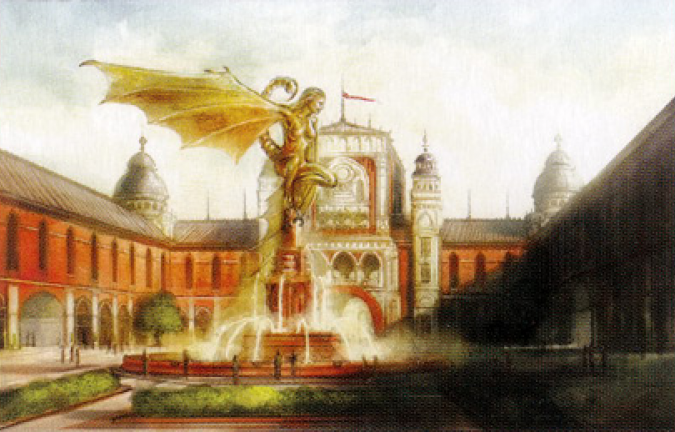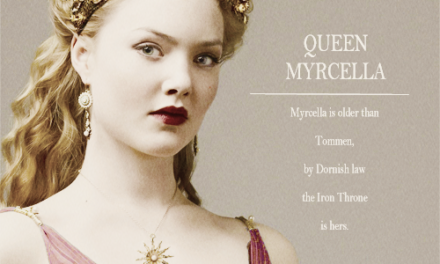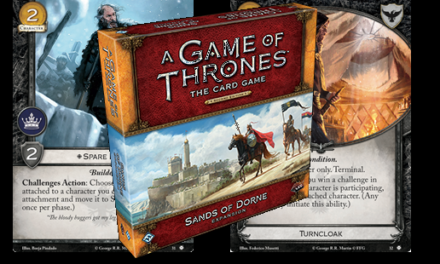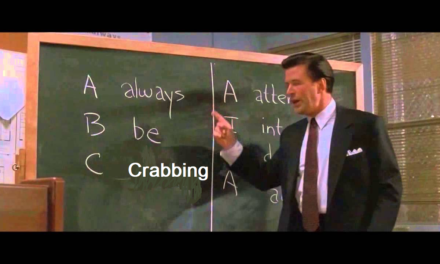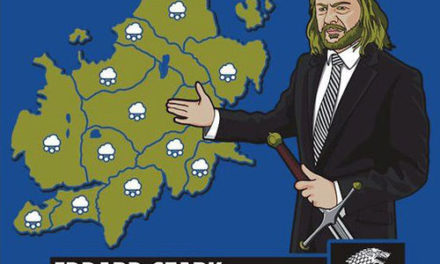What a glorious time to be a dragon!
Those of you that read my review of the last cycle may recall that I was pretty down on the cards Targaryen received, a theme that was repeated from the first cycle as well. For quite some time Targ was coasting by on a very strong core set and a rare few gems that had dropped subsequent, but the faction as a whole felt like it was stuck in a holding pattern.
Needless to say, that is no longer the case. Targaryen took off like a bat out of hell competitively as soon as the third cycle dropped. Tournament performance improved as soon as we got access to Slaver’s Bay Port, which again testifies to the strength of Targ’s core cards, because it wasn’t even new, powerful cards pushing Targ to prominence, but a greater ability to afford their existing cards. Targ remained a solid contender throughout the tournament season, with it all culminating in a win for Targaryen Lord of the Crossing at Worlds this year.
Now we’ve got a bunch of sweet full-bleed cards to look forward to, several of which are featured below. Targ is in the best shape it’s been in since immediately after the core set, and shows no signs of looking back.
All Men Are Fools
Ghiscari Elite—It was a sad testament to the state of the Targaryen character base, that Ghiscari Elite almost could have made decks just because it was a 5-for-5 bicon. I’m not a fan of this card, and haven’t seen anyone get significant mileage out of it. It’s not Merchant Prince-level terrible, but I’d like to see a better payoff for a 5 cost character. The fact that GE only places the card on the bottom of your deck rather than shuffles it back in is the limiting factor. If Targ ever gets a way to actually access the bottom of the deck it would have some value as a combo piece (potentially), but there are better options available to you.
Slaver’s Bay Port—The card that began Targ’s competitive ascendance. Getting your new econ card before other factions is rarely a bad thing, and Slaver’s Bay Port is quite solid, and was absolutely fantastic upon release. It isn’t able to activate turn 1 like the Martell one, and requires a bit of work to have it up and running. But unlike most of the other econ locations, once you have SBP online, it will almost always stay humming along at 2 gold per turn. Turning your Valar or Blood of the Dragon into a pseudo-economy plot by activating Slaver’s Bay Port with a few key deaths is always a great thing.
The one fly in the ointment is the growing prevalence of non-kill resets, such as Varys, Valar Dohaeris, etc. These board wipes don’t feed your economy location, while also stalling you, which means that the Port might not be QUITE as good as it was immediately upon release, when we were still very much in the Big Guys meta. Still a very solid card, and suitably thematic for Targ.
Guarding The Realm
A Dragon Is No Slave—Evaluating this card in a vacuum upon release, I wasn’t overly impressed with ADINS. On the face of it, spending a card and 2 gold to give a character (without attachments!) -2 strength isn’t an amazing deal. Perhaps it’s my 1.0 sensibilities that cried out, asking “where’s the ‘and kill it if it’s strength equals zero’ part?” But cards have to be evaluated in context, and 2.0 burn effects are far tamer than their 1.0 cousins.
So what makes A Dragon worth playing? For one, the recursive trigger on it. All houses got a recursive event this cycle, allowing you to play a thematic event for each faction multiple times. Targaryen has the added benefit of being able to use such a card in more than one way, for example tossing it as fuel to Plaza of Pride, only to later pull it back out of the discard pile for use or further Plaza fodder. Even if you never used it’s actual printed effect, that card economy with Plaza would have value.
The other part of Dragon is that it functions as a finisher. Just using the card by itself for a soft control effect is underwhelming, but using it to push bigger characters down to zero strength (and death) in combination with other burn effects is the whole point of this card. Five and six strength characters are no longer safe from Dracarys, Plaza of Punishment can hit up to 4 STR characters, and even characters that don’t actually participate in challenges (like NW’s Maester Aemon) can Feel the Burn on a Blood of the Dragon turn thanks to this event. Speaking of Blood of the Dragon, if you have Daenerys and a dragon or two and enough gold, this event can turn into a machine gun that decimates multiple opposing characters.
Certain Targ decks won’t find room for this card at the moment, and I can’t fault them for that decision. But if we see continued burn support, to where you can actually run a fully focused burn deck like in 1.0, this will function as a valuable enabler card, roughly akin to a more balanced The Hatchling’s Feast.
Great Hall—A neutral card, but almost felt like getting another Targaryen economy location. Targaryen’s non-unique characters are still (for the most part) lackluster, which means that most Targaryen decks I run have about 27+ unique characters in them. A location that reduces all of those, even across faction lines is very good. Reducing the most expensive characters you’re running (again, regardless of faction affiliation) by twice as much is spectacular.
Valar Dohaeris may pump the brakes on big characters (and thus Great Hall) somewhat,, but I still always start my Targ econ base with Illyrio’s Estates and Great Halls. I think this will remain a staple econ card for Targaryen for a long time, unless VD completely overwhelms the meta, or Targ is suddenly spoiled with a number of auto-include non-unique characters.
Second Sons—Cards like this are why I’m glad I write the Cycle End reviews, rather than the pack release review. Upon release, and on it’s own merits, Second Sons is a rather poor card. I couldn’t figure out where the sweet spot would be with this card—do you use the Bestow ability for a couple gold and end up with a semi-efficient big body with no game text, or do you skip Bestow (or drop 1 gold on it max) for an efficient big body that won’t stick around long? The latter seemed like the better option to me, and if I squinted a bit I could kinda sorta see a place for it in a low-curve Targ aggro deck looking to leverage 2 claim plots. But that still didn’t feel right to me.
Then Flea Bottom was released, and this card finally made sense. Pair Second Sons with Flea Bottom and your location’s text essentially becomes “Challenges Action: Pay 1 gold to ambush in The Hound once per turn.” That’s a bargain worth having! Getting them into the discard pile is easy as could be, whether from their own Forced Reaction or in tandem with Plaza of Pride to stand anything up to six cost, so the combo assembled and ready is likewise straightforward. Really the decision tree with Second Sons boils down to the question: Are you playing Flea Bottom? Then run 2-3 copies of Second Sons. Not running Flea Bottom? Then leave them in the binder.
The Fall of Astapor
Grey Worm—I was absolutely thrilled when this guy was first spoiled, and playing games with him has confirmed my gut reaction.
He has a couple of limitations; a six coster without Renown isn’t cheap (even if Great Hall makes big characters feel that way), he’s nothing special on defense, and while No Attachments is a boon in the Night’s Watch matchup, it also locks him out of using the hugely beneficial Warrior’s Braid.
More than off-setting those downsides though, you get an offensive beatstick with the aggro icon pairing I so enjoy. (An aside, I can think of no thematic explanation to justify Grey Worm having an intrigue icon. The only rationale I can come up with is so that he isn’t a total murder-machine in power challenges with Plaza of Punishment, and this concern might have also contributed to his No Attachments keyword to avoid a cheeky Noble Lineage. But enough baseless speculation.) Grey Worm is one of the best attackers in the game. Owing to his reaction he’s effectively strength 8 when attacking, but moreover, your opponent has to defend with either two characters or someone with at least strength 4 just to block unopposed. He makes it easier to trigger Rains of Castamere, mitigate the weakness of the first Lord of the Crossing challenge, can drag larger characters into Dracarys range, the uses for Grey Worm’s challenge action is really only limited by your imagination.
The thing I complained about most in the first two cycle reviews were the lack of good, playable Targaryen characters. Grey Worm is a valuable addition to our pool, and I would consider at least one copy of everyone’s second-favorite eunuch in just about any Targaryen deck except a micro-curve.
Astapor—Nothing feels better than slamming down Astapor with a fat stack of gold on top of it and watching your opponent’s face fall. Except stealing or blowing up an opposing Astapor with a fat stack of gold on top of it. Astapor is spectacular, I don’t think I need to discuss it in too much depth. Repeatable control is very good, whether it’s just using the strength reduction to make your opponent lose challenges, or even better in tandem with terminal burn effects to kill characters. Astapor can be a big tempo hit depending on how heavily you choose to invest in it (remember, just bestowing 2 gold isn’t always a bad thing), but it will pay dividends as long as you’re able to protect it. Dupes are good, and tread with caution versus GJ, because Dagmer or a Newly Made Lord hitting a loaded Astapor will ruin your day.
Watchers on the Wall
Dothraki Honor Guard—This card isn’t terrible, but it’s a little too cute for my liking. I’m a Jaime player through and through, so I like consistent, reliable cards. Cards like Dothraki Honor Guard, which can fluctuate wildly in power level, just don’t appeal to me. Early game when you have a lot of cards in hand, this guy can be horrendously inefficient. Late game, or if you’re pursuing a more aggro style of deck (probably one that runs low reserve plots), he can be a huge beatstick similar to the Mountain with a pair of icons. That’s not nothing, but you still have to consider that even in the best case scenario, you paid 5 gold for 10 STR, but no game text, and he gets worse if you draw or keep cards in your hand. He does have synergy with Plaza of Pride, which is nice, but any good character with game text ALSO has Plaza synergy. Compared to some of the trash Targ got in previous cycles, the Honor Guard is an improvement, but after a relatively short period of testing, I sent them back to the binder.
Plaza of Pride—Best Targ card of the cycle, probably the best Targaryen card released since the core set. Blows my mind that Plaza of Pride isn’t loyal, because it is a faction-defining card that won’t ever rotate. Trading card advantage for board state on demand is spectacular, and probably doesn’t require me to say much about it.
This card is already silly-good on the face of it, but seeing it used in tandem with discard recursion like A Dragon Is No Slave and Flea Bottom really pushes the strength to 11. Only decision point with Plaza is how many copies you run—I usually opt for the full playset of 3, both to increase the odds of seeing Plaza, and also because Plaza’s ability means that any unneeded copies are fuel rather than dead cards. Our recent world champ only ran 2 copies though, so other schools of thought exist and are probably equally sound.
The Red Wedding
Breaker of Chains—Another attachment based on the “Danny’s endless litany of names” theme. Fortunately unlike Mother of Dragons, it isn’t restricted to actually being played on Daenerys. And has really sweet artwork to boot!
I’ll be honest in admitting that I haven’t tested this card myself, but I do find it interesting. It encourages a cheap curve, swarm approach that Targ has some decent tools for. Kinda nifty to have an attachment that functions as both a strength pump AND economy, by putting characters into play, and moreover, those characters come in effectively like an ambush. That’s a good ability to have, but it does beg the question about how many characters do you want to vomit out of your hand in a reset-heavy meta? Flea Bottom can later recur them if they end up in the discard pile, so there’s potential for a nice combo there. Also really interesting is that there’s no limit on Breaker’s reaction, so for the House of Stand, the only limit to the number of free characters you can get into play is the number of suitable characters in hand.
I’m unsure if Targ has sufficient card draw to really fuel this engine right now, but it’s a very cool piece of tech that should get even better over time.
Strong Belwas—Neat. Strong Belwas isn’t going to set the world on fire, but he’s a solid character probably worth a x1 inclusion. The (shapely) body isn’t really what you’re paying for here, as Belwas is marginal to begin with, as a 3 cost 4-STR monocon, like Drogon without that awesome Dragon trait. What you’re paying for is the Bestow effect, allowing you to keep characters around when they would otherwise be killed. So he’s a save effect on a stick. The save is telegraphed, and Belwas himself can also be killed, limiting your save opportunities. So Targ isn’t going to compete with Greyjoy for save effects just yet, but it’s a useful ability and a better option than the awkward Blood Magic Ritual. Usually when I play Belwas I only bestow 1 gold on him, because 2 gold really incentivizes your opponent to just go ahead and kill him (usually with Valar) and waste some of your investment. 2 is acceptable though if you plan to use one of the tokens in the following phase as claim soak. Slightly inefficient card, but does something that Targ can use, allowing you to hold onto your Fire and Bloods for better opportunities.
Oberyn’s Revenge
Irri—Irri is a poster-child for an effective Bestow card in my book. She’s efficient enough to play on her own and not feel awful if you don’t get to use her Bestow ability, AND the Bestow effect is actually worth the price of admission. The only downside to Irri is that she’s currently better in a banner deck than a pure Targaryen deck, because Targ only has 4 targets for her ability (Danny, Drogo, Illyrio, and Viserys), but there are also several neutral options that you can include in your deck for added versatility. Solid include in Targaryen decks (and will get better with the release of additional Targaryen Lords and Ladies), and probably an auto-include in any Banner of the Dragon decks unless you’re playing Night’s Watch. Only decision point I have with Irri is if I only want a single copy, or if she’s worth running two.
Overthrowing the Masters—I like seeing the “number of characters in your opponent’s dead pile” becoming a nascent theme for Targaryen (Slaver’s Bay Port & Jhogo), but can’t really get onboard with this card. Targaryen event slots are too tight, the card isn’t terribly useful early in the game, and it still costs a gold. I’d much rather play a Dracarys or Dragon Is No Slave, and I’m not convinced that a challenge removal is worth the slow build up to reach critical mass of having a bunch of dead opposing characters. If this was a strength reduction effect rather than challenge removal though, I’d be all over this card like stink on shit.
The Brotherhood without Banners
Freedmen—I’m so glad this card came along, because otherwise I would have had a tougher decision for naming the worst Targ card of the cycle. Freedmen is straight up terrible. At first glance, this appears to be a combo piece for Plaza of Pride, but the payoff is awful. I wouldn’t include a 2-cost 1-STR bicon in my deck under normal conditions, so why would I do that just because I can toss them to the Plaza and potentially recycle them? Winning by 5 isn’t an onerous proposition, but rather than having Freedmen return to my hand (which might make them actual viable Plaza fuel), they instead bounce into play. Gee, thanks.
The only good thing to come of this card was jokes about the art (my favorites being Great Bears of Westeros’ “Paper snakes!” and “These guys are shredded like lettuce!” or other ab jokes). Unless you need a chuckle, you can safely leave these guys in the binder until the end of time.
Warrior’s Braid—A two-cost non-unique attachment that confers unconditional renown? Cool! Nice to see a Targaryen attachment card worth playing, and not one that’s horribly limited in who you can play it on, to boot. The reaction is essentially gravy—getting strength buffs is cool, but I wouldn’t feel bad about playing this on a character without a military icon like Daenerys, because renown in general is good. Renown in a house that was sorely lacking it previously is better. And renown in the house that specializes in stand effects is pretty spectacular.
Daenerys with Rhaegal, Ser Barristan Selmy, and any bloodrider with Aggo out all make fine targets for Warrior’s Braid, but really anyone will do if you have a Plaza of Pride, Illyrio, or any other standing effect available to really make this hum. The increased prevalence of mass resets is unfortunate, had this card come out in the first or second cycle, it would have made Targaryen pretty batshit crazy. That said, it’s still a very good card, and it combos well with other spoiled Dothraki-themed cards (Bloody Arakh).
Top 5 Cards
1) Plaza of Pride
2) Astapor
3) Grey Worm
4) Slaver’s Bay Port
5) A Dragon Is No Slave
Worst 5 Cards
1) Freedmen.
2) Overthrowing the Masters
3) Ghiscari Elite
4) Dothraki Honor Guard
5) Second Sons
Bonus Round
House of Thorns cards weren’t supposed to be included in this review, but I’m going rogue and Joe can’t stop me, because I really want to dig into this card…
Qotho—There’s a lot to unpack here, as Qotho is interesting in a number of ways. On the face of it, he’s just an efficient 5-for-5 bicon. I’m partial to Mil-Int characters, so he checks that box for me. Once he’s actually in play, he has no other game text, which would normally be a real big red flag for a character that costs 5.
But he doesn’t have to (and probably won’t!) cost five gold, because his action allows you to discard 2 Targ cards to put him into play. Note, this is a very risky play against Lannister because a Treachery will send him back to hand while you still lose 2 cards. Using cards instead of gold to ambush in a character is interesting, and unlike jumper style events that can accomplish similar goals, once Qotho is in play, he stays there. Dupes of dead characters, extra econ, nonessential cards, all can fuel Qotho’s action to save gold. But thanks to Flea Bottom, the cards you pay a “cost” with, can also seed characters to then recur in the challenge phase. That’s pretty clutch.
Setting that aside, you also have his simple 5-5 body with an intrigue icon that makes Qotho invaluable in a Targaryen Rains of Castamere deck. Because you can “ambush” him out at any time without warning, you can pull off very unexpected Rains triggers because as long as you could win the challenge without him, Qotho will put you over that win by 5 threshold. Opponents need to carefully consider any intrigue attacks against a Targ Rains player, because a defensive win is a real threat.
The other thing I find interesting is that Qotho is yet another Bloodrider for that growing theme. He’s the first Bloodrider to not have any actual Bloodrider synergy of his own, but his action can allow you to unexpectedly activate your synergy without warning. The biggest impact would be if you were running Rakharo and could jump Qotho in after your opponent has declared defenders to give Rakharo Intimidate. The other effect is that having another strong Bloodrider character makes Blood of my Blood a more viable inclusion. I had earmarked that event for greater significance in the future, and I think Qotho would fit quite well. 3 gold for that search and one challenge phase of usage is still steep, but using BOMB to search out Qotho, put him into play for a challenge or two and activate some synergy, then having him bounce back to hand and be able to play without paying seems like a compelling bargain. The spoiled Bloody Arakh card shows FFG is going to continue developing Dothraki, and I’m thrilled for it, as they were probably my favorite 1.0 theme deck.
Cycle 2 Retrospective
Beggar King—Remember when this was the best card Targaryen received in the second cycle, and it wasn’t even close? That time ended quickly, with the release of Slaver’s Bay Port, and doesn’t look to be coming back anytime soon. Non-limited economy is great, but said economy has to be able to survive board wipes AND also dictates the composition of your plot deck, which is a HUGE factor in Thrones. With far superior economy sources being released this cycle, I’m doubting we’ll see much from Beggar King in the future. It’s best hope for a resurgence might lie with the Wars to Come agenda that allows you to craft a larger plot deck that could include options to synergize with Beggar King as well as standard econ plots for when you don’t have it, but I’m not sure even that will help much. The King is Dead (with a Crown of Gold upon his head), and seems likely to stay that way.
Barristan Selmy—A few people expressed surprise that I rated Selmy as highly as I did. His ability is situational, though as I discussed, aggro decks running low reserve could exert greater control over when his ability is active, and benefit greatly from it. Plaza of Pride became Barry’s new best friend, as this location allows you to have even greater control of triggering his reaction. Tossing a card to stand another character, get yourself under your opponent’s hand size, and then trigger Barristan upon winning a challenge to get ANOTHER stand effect is pretty sweet.
I’m given to understand that there’s even a Voltron/rush style deck out there utilizing Selmy and Warrior’s Braid, to get Barristan making multiple challenges and racking up renown power quickly. I love it. Barristan is still a little tricky to protect because he can’t take a Bodyguard and his situational ability means that it’s risky to run multiple copies of him (outside of the aforementioned deck), but Strong Belwas gave us one option this cycle, and you can still just play prudently. Selmy usually ends up as a x1 in any deck I build, and he’s got the potential to get even better in the near future when Bloody Arakh and some Dothraki characters allow you to start making even more military challenges. In light of improved synergy, I’d say Selmy now stands as the best Targaryen card from the second cycle.
About the Author:
Justin Sengstock (Sokhar) is a proud bastard of the Dreadfort (central North Carolina) meta, and Targaryen aficionado. He is a six year Thrones vet and the “championship caliber player” of his meta, with Regional, SC, and about a dozen local tournament wins under his belt. That does not imply that his opinions should be taken as anything greater than bathroom reading material, however. He plays Targaryen regularly and always looks to the newly spoiled Targ cards first, but just can’t seem to figure out how to quit those Lannisters in tournament play.

